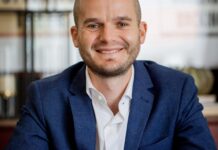
Andreas Tindlund at Abax Investments has launched the Abax Agile Fixed Income Prescient RHF, taking a tactical and flexible approach to the South African fixed income space.
Tindlund joined Abax in mid-2023 as part of the multi-asset and fixed income teams. Founded in 2003, Abax is an independent owner-managed firm managing around R95 billion across a focused range of equity, multi-asset and fixed income portfolios.
Tindlund has 18 years’ investment experience and is a CFA charterholder with an MSc (Industrial Economics and Technology Management).
He has spent more than a decade at Norges Bank Investment Management, the Norwegian sovereign wealth fund, based most recently for nearly four years in Oslo and prior to that in New York from 2006-2015.
He was also a senior portfolio manager at Terebinth Capital in Cape Town for three years from 2015, where he co-managed the fixed income macro hedge fund.
In his most recent stint at Norges from 2018, Tindlund was a senior portfolio manager, emerging markets debt, managing a US$10 billion global off-benchmark portfolio of EM local-currency fixed-rate and inflation-linked government bonds and foreign exchange.
Having managed significant assets across 20 different local markets, Tindlund has a good perspective on how South Africa stacks against its peers, noting that global participants operate in certain areas of the SA market, moving in and out to create dislocations which offer low-risk high-reward potential.
He notes that relative to its volatility South Africa’s bond market is amongst the most liquid in emerging markets alongside Mexico. The market’s scope lends itself very well to relative-value trades – with an array of products and institutions and a liquid derivatives market.
Tindlund will tactically deploy his best investment view, looking across the yield curve at South African instruments including government and corporate bonds, money markets, NCDs, FRAs, interest-rate swaps, futures and forex options.
“The fund is designed to be flexible and dynamically shift around across strategies in the local markets,” he says. “It can be tempting to remain long on the fixed income side, but the result is that you can get very correlated with other funds and the bond markets. We are seeking less correlation with other fixed income products and we don’t want to be saddled with certain risks that we would be exposed to for a long time.”
The fund launched in late July with assets of around R50 million, including support from an external investor. Asset size will be capped at some point.
It targets a net annual return of cash plus 5%.
Tindlund notes that foreign investors stayed away from the local bond market in the run-up to the recent elections, with a favourable outcome taking away “worst-case scenarios”. This has allowed bond yields to also incorporate other positive developments this year including an improvement in loadshedding, better fiscal numbers, the reappointment of SARB governor Lesetja Kganyago for another five years, distribution of GFECRA funds, and work in progress on a binding fiscal anchor as well as a review of the inflation target.
“There have been a lot of improvements,” he says. “Importantly, National Treasury has also changed tack with reduced duration of issuance. An excess supply of bond duration previously led to higher yields and made the South African market extremely cheap compared with other emerging markets.”
The recent rally in the local market prior to the fund’s launch has “taken out some of the excess cheapness” in the market, but Tindlund still sees long-term upside as the market settles.
The fund will deploy a tactical rather than a top-down macro approach, preferring relative-value positioning to long-term duration bets.
“We try not to be too constrained,” says Tindlund. “We are risk averse, and don’t want to take exposure when conviction levels are low. Our VAR (value at risk) utilisation will vary over time. We will take risk when conviction levels are high, looking for high reward/risk ratios.”
“We aim to run a clean ship and continue to interrogate every position in the portfolio,” he adds. “We don’t want to be saddled with legacy positions that can constrain you from a risk perspective. It is important for us that when something material changes in the market we can quickly change our risk positions.” Copyright. HedgeNews Africa – July 2024.



